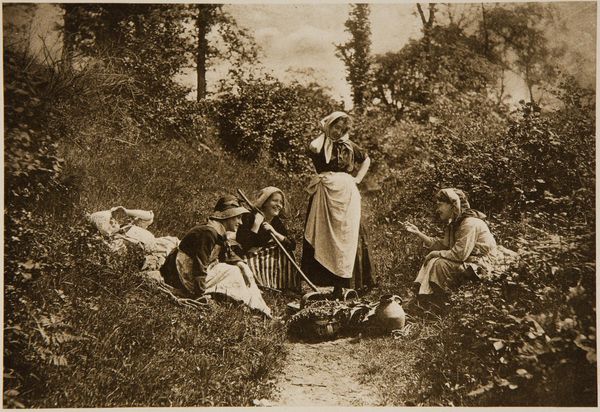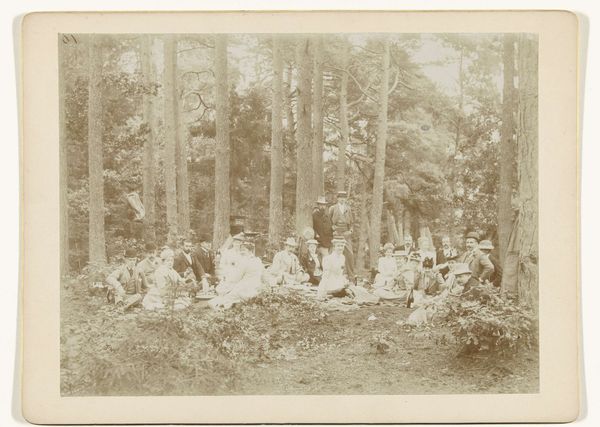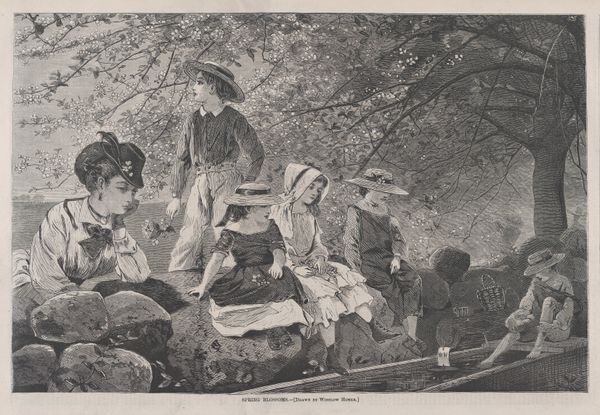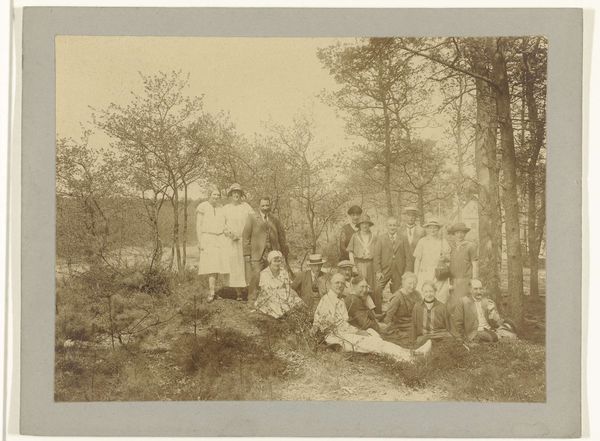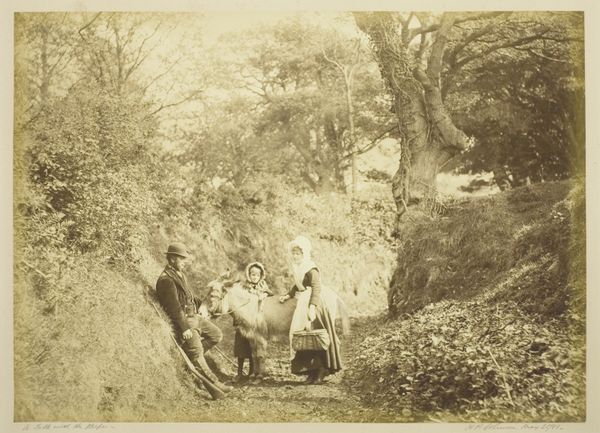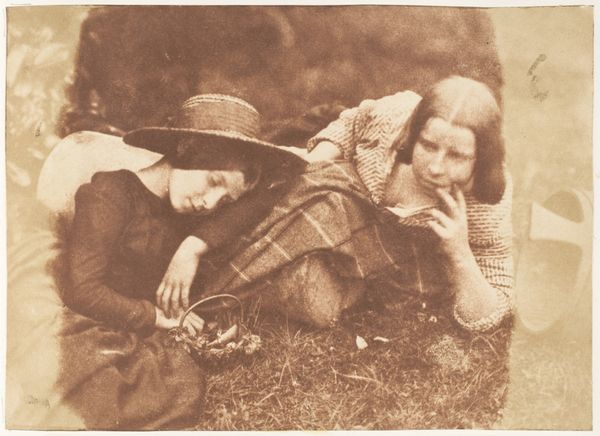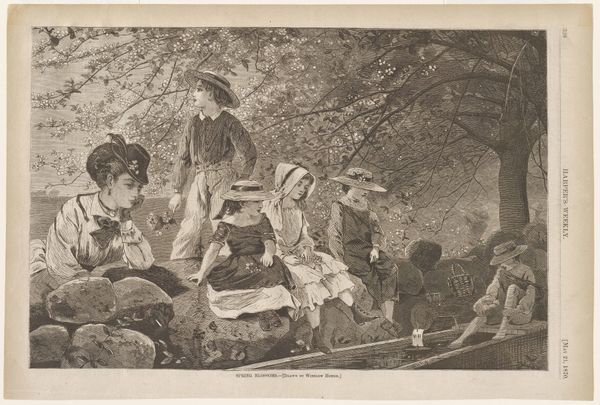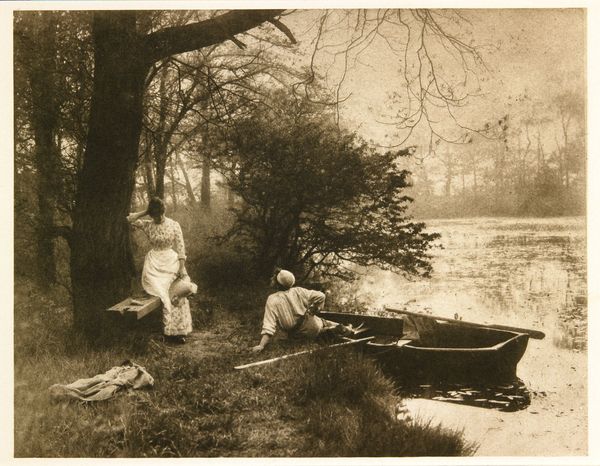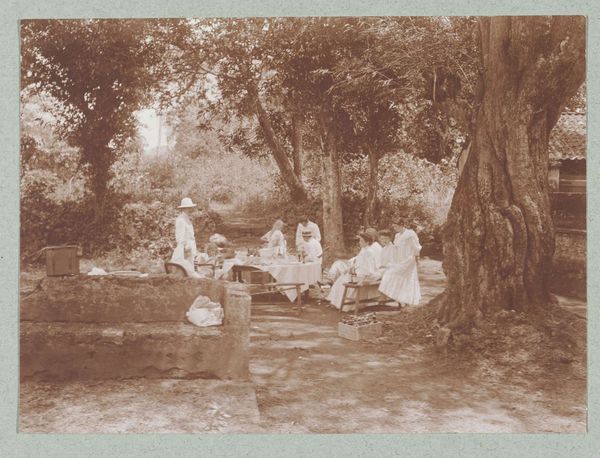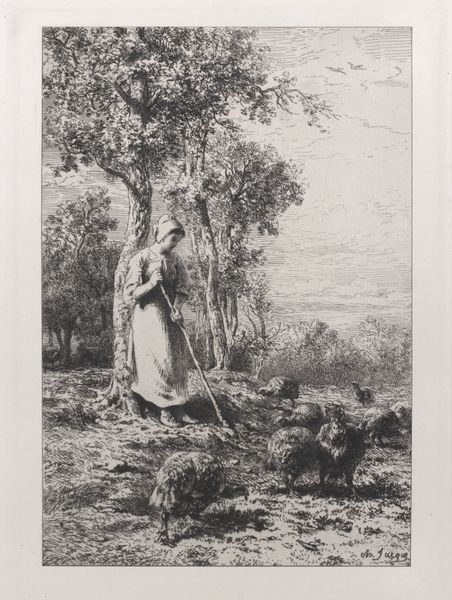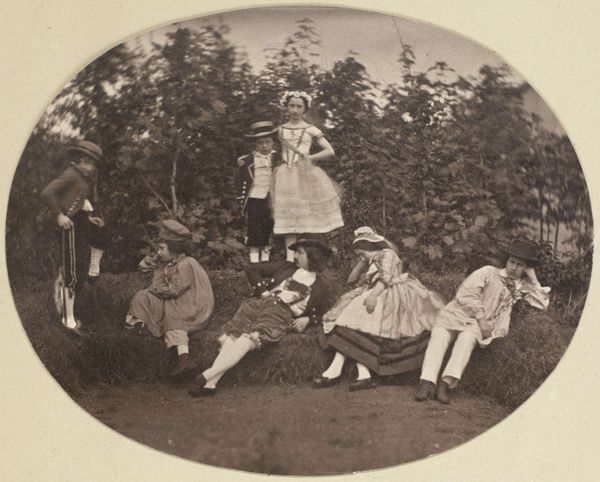
photography
#
portrait
#
16_19th-century
#
pictorialism
#
landscape
#
photography
#
england
#
genre-painting
Dimensions: 12.4 × 18.1 cm (image); 27.9 × 38.2 cm (paper)
Copyright: Public Domain
Curator: Let's turn our attention to Henry Peach Robinson's photograph, "A Merry Tale," likely created between 1882 and 1890. It's quite captivating, don't you think? Editor: Absolutely. There's a palpable sense of warmth, isn't there? A group of women are gathered, maybe taking a break. The light, the natural setting, it evokes a really serene, almost staged, folk life. Curator: Robinson was a key figure in Pictorialism, a movement which advocated for photography as fine art. So while seemingly documenting everyday life in the English countryside, this image also represents staged, constructed photography. Thinking of that construction, this reminds me of discussions around gendered labour, class divides in representation, and rural vs. urban idealizations of 19th century England. Editor: It's definitely constructed. If we think about how landscape and figure are positioned within the frame, it suggests a focus on the labor practices, specifically that of rural women who relied upon the land to survive. This piece makes us wonder about women’s roles during the late 19th century and consider our perception of the image as possibly in contradiction to lived experience. Curator: Precisely. Consider also that Robinson often used composite printing, combining multiple negatives to create a single image. That fabrication adds a layer of artifice, playing into those romanticized notions of pastoral life that often masked harsh realities of the time. Editor: Knowing that the artist manually manipulated the materials underscores how crucial these images were to constructing a dominant idea. From its surface texture to the processes used, "A Merry Tale," shows photography was really made, as in, manually manufactured through manipulation. This helps us grasp just how mediated and ideologically framed an image such as this can be. It becomes far more than a passive document. Curator: It reflects and shapes cultural understandings. Seeing these women positioned like this—laughing, sharing stories in a verdant landscape—promotes a selective narrative about life at that time. And, you’re right, understanding the process unveils how meticulously that narrative was built. Editor: Well, looking at "A Merry Tale" alongside modern discourse really clarifies how seemingly 'natural' or 'objective' depictions in photographic prints actually involve complex manipulations, especially within contexts of class and gender in England at the time. Curator: It's these juxtapositions that keep historical art practices deeply relevant, encouraging continued analyses and, more importantly, critical re-evaluations of the socio-political frameworks that made images like this both possible and, at the time, popular.
Comments
No comments
Be the first to comment and join the conversation on the ultimate creative platform.
